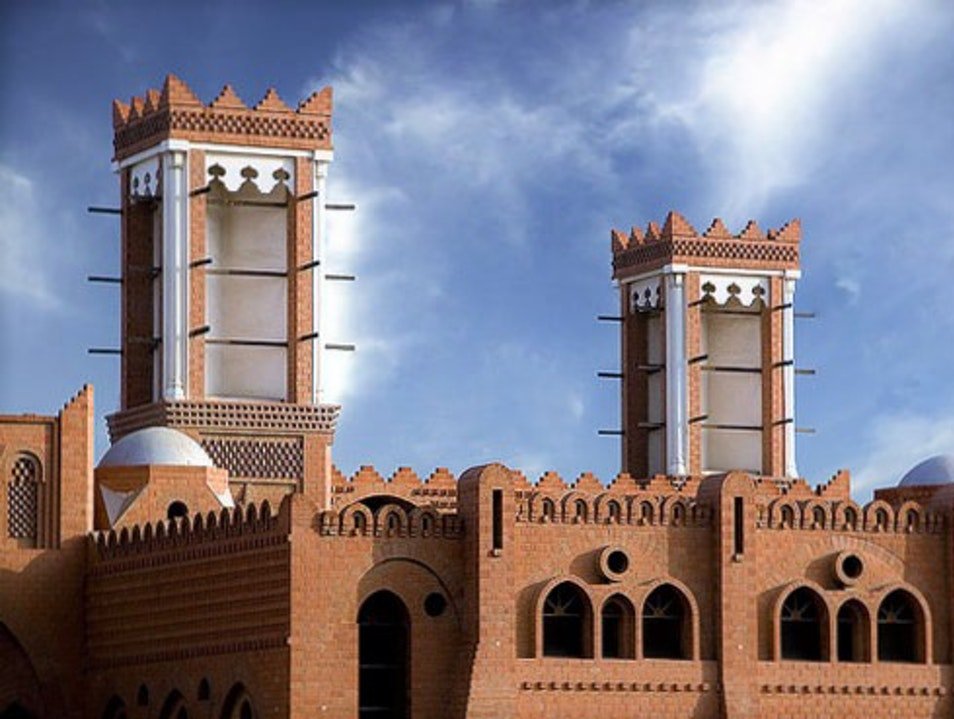Summers in Qatar are an entire different story. We all know that during peak summers, the temperatures take off to a normal limit of 42°C in the country! Today, we almost don’t feel the sweltering heat because of the comfortable ACs and fans we have become used to. Have you ever considered how life was in Qatar before the innovation of air conditioning? Let us take you back in effort to get a brief look at how people used to beat the heat with basic yet successful techniques that they applied while building their homes and structures once upon a time.
How Did People Cool Themselves Before?
During the olden days, people built towers called Wind Towers, and it is also called as ‘Barjeel’ in Arabic, for cooling the temperature inside the structures before electricity was developed. The peculiar design of the building allows it to do as such.
In Qatar, the ‘Burj Al Hawwa’ or the Wind House Tower, housed in a traditional Qatari built in 1935, still stands the test of time and is one of the remaining wind towers in Qatar!

Once upon a time, houses that had wind towers signified wealth and status. Homes that were intricately built, with a yard or majlis (which are ordinarily observed in Islamic engineering even today), had the wind towers located on the exterior rooms of the house, where they normally invited guests.
How Would They Work?
1. The Wind Towers frequently rise more than 15 meters over the ground, where the wind speed is greatest and the air is cleaner and less laden with sand. Multidirectional wind-towers capture the wind from any direction.
2. The funnel helps the descending air into the room below. Wind exerts have high positive pressure on walls facing its flow.
3. Circulation of air gives a cooling breeze into the rooms. The breeze helps cool the body by increasing the vanishing of moisture from the skin.
4. A strong current of air maintains the air circulation. An opposite effect is created on other sides, causing air to be sucked through the structure and out of different vents.
The windcatcher and its usage in Persian architecture.
The windcatcher, also known as a badgir, has been used in Persian architecture for centuries as a sustainable and effective means of cooling and ventilating buildings in hot and arid climates. The windcatcher consists of a capped tower with several directional ports at the top, traditionally four, that can be opened or closed to control the direction and flow of air.
One of the key functions of the windcatcher is to draw cool, dry night air over a long passage of water, which then evaporates and cools the air further before it enters the building below. This process of evaporative cooling is very effective in dry climates, but it can be less effective in high humidity environments where the air is already saturated with moisture.
In addition to its use as a cooling device, the windcatcher can also function as a thermal chimney, using the convection of hot air to create a pressure gradient that allows less dense hot air to travel upwards and escape out the top. This can be particularly effective in buildings that receive a lot of sunlight and passive solar energy, as the heated air will naturally rise and escape through the windcatcher.
The windcatcher is often used in conjunction with other sustainable building techniques, such as the use of thick adobe walls and other natural building materials that have high heat transmission resistance qualities. These materials help to regulate the temperature inside the building and provide additional insulation against the heat.
The windcatcher has also been used in traditional water reservoirs, or ab anbars, to keep the water at near-freezing temperatures for months during the summer. The windcatcher is particularly effective in these environments, as it can draw cool air over the surface of the water and circulate it throughout the reservoir.
The windcatcher is a remarkable example of sustainable design and architecture, and its usage in Persian architecture continues to inspire architects and designers around the world.
Where can you see it in Qatar?

The Wind Tower House is an historical landmark and is situated in the yard of the Najada Shopping Plaza on Grand Hamad Avenue and Ali Bin Abdullah Street. This structure used to be the Ethnographical Museum. But, it is currently closed and the house is no longer open to the public, although it can be seen from the outside.
Here are about windcatchers in the Persian Gulf countries Other than Qatar
- Bahrain: The use of windcatchers in Bahraini architecture is a prominent feature, particularly in the old town of Muharraq. The windcatchers are designed to capture and direct the wind towards the interior of the building, providing natural ventilation and cooling. They are also decorated with intricate designs and patterns, reflecting the local artistic traditions.
- Iran: In Iran, windcatchers have been used for centuries, particularly in the central desert regions where temperatures can reach extreme levels. The windcatchers are known as badgirs and are typically made of brick or mud, with four or more openings to capture the wind. They are often decorated with geometric patterns and other designs, reflecting the local architectural style.
- United Arab Emirates: Windcatchers have also been a feature of traditional Emirati architecture, particularly in the city of Dubai. The windcatchers are designed to capture the prevailing winds and direct them towards the interior of the building, providing natural ventilation and cooling. They are often decorated with intricate designs and patterns, reflecting the local artistic traditions.
- Oman: Windcatchers are also a feature of traditional Omani architecture, particularly in the interior regions where temperatures can reach extreme levels. The windcatchers are known as badgirs and are typically made of mud or stone, with four or more openings to capture the wind. They are often decorated with geometric patterns and other designs, reflecting the local architectural style.
Please Subscribe Us to get updated with Qatar News, Saudi News, Kuwait News, Health News, UAE News, Iqama, Visa, Jobs, Banking and More..



